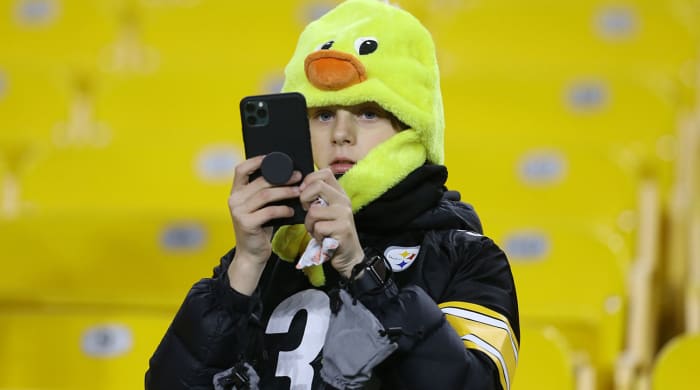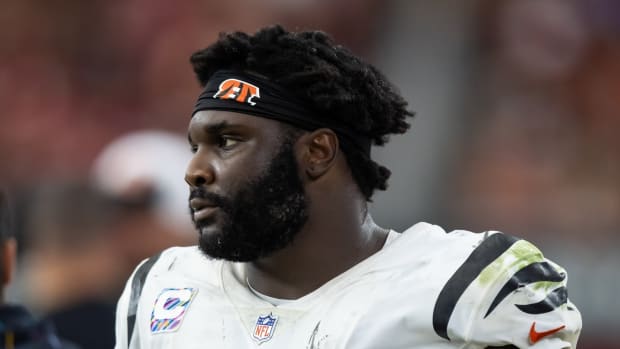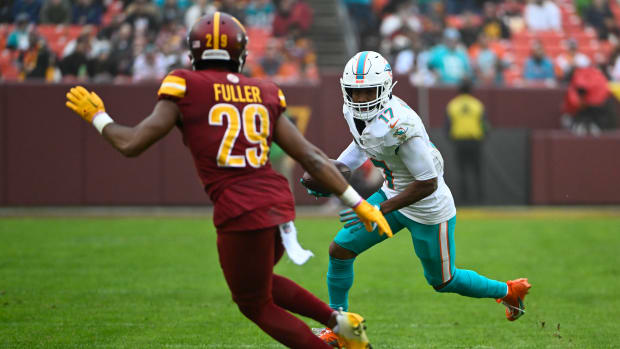In a Push for Gen Z Fans, the NFL Is Looking for a Leg Up on Instagram
Back in August, data intelligence company Morning Consult surveyed 1,000 members of Generation Z, a broad term for those born between the mid-1990s through the early 2010s, about their sports fandom habits.
The result was noteworthy in that it showed a somewhat significant decline in enthusiasm across the board for major sports. Just 21% of the respondents identified as “avid” fans, which was down 4% from their older counterparts. Only 32% identified as a casual fans, while nearly half of respondents said they were not sports fans at all—a mark more than 10% higher than their older counterparts. When sorted by gender, some of the results were even more dramatic, with more than half of female respondents identifying themselves as not a sports fan.
Dallas Mavericks owner Mark Cuban said that it was, “The future of sports media in one article.”
Findings of this sort all lump into a general potpourri of how many of us view younger sports fans. The NBA, for example, seems to be doing better among their specific demographic. Esports also seem to be thriving for people who are between the ages of 13 and 23. These are the kinds of things nearly every bespectacled consultant type will say at Big Important Meetings without having an idea of how and why, outside of the common dartboard theories: Esports personalities are more available and connectable to their fans, while the NBA has fully embraced the gamification of the sport and lends itself to a younger population that prioritizes personality over team identity.
And while some sports seem to be doing fine, remaining fat and happy off the glut of their aging fanbases—hello, baseball—there is always a push to expand and reach new audiences before those demographics are lost forever.
The attempts to reach younger viewers are not yet at the level of outright pandering. For the NFL, part of that approach is through a partnership the league has entered into with Instagram’s Playmakers program, and an NFL edition of their Student Section program, which was launched a few years back and worked with college students to use new social features while embedded with their on-campus teams. It seemed interesting in that, while the NFL is not expressly saying it is worried about any such demographic shifts, by getting involved with a social media company largely aimed at younger users it is playing around with content and asking some of its traditional footage to be seen through another set of eyes—namely 17- through 20-year-olds who can tell older people how they like to view content from their perspective.
The programs give college students at big universities access to a trove of original NFL content with a directive of making highlight videos and cut-ups showing a player from their college who is now succeeding in the NFL, or some other variation on that theme. It also hands the NFL a magic mirror of sorts; an opportunity to see itself through the eyes of a much younger cross section of people (the programs are 40% and 65% female and minority students, respectively).
Rich Elmore, the NFL’s senior director of player, club and collegiate social marketing, said the approach is multifaceted. The league wants to attract the lay fan at Alabama, for example, who has an interest in football but is in an area with no professional team and has no traditional ties to the NFL. The league also wants to have a sympatico relationship with younger content creators who can have a nontraditional take on the standard highlight and can amplify the product beyond the milquetoast highlight which, at least according to some different social indicators, has largely lost its appeal with younger audiences.
“I definitely think that continuing to reach a younger audience, like in many instances you might be a fan of a college or attending a college, so how can we appeal to you as an 18- to 22-year-old college student? Maybe it’s making you aware of a player who went to your college a few years before you but you just weren’t at the school then. Now, say you’re at Alabama, you can learn about and watch Derrick Henry and ultimately that helps our objectives at the NFL.
“That’s one side of the equation. The other is cultivating the relationship and support with younger creators. In order to reach those from Gen Z where NFL fandom may be different, we need people on our teams going forward who understand that mentality and who can articulate that mentality.”
The result is something like this, this, or this. Upbeat music. Attention-grabbing transitions and visual effects. Nigel McWilliams, one of the program’s representatives from Alabama, said, “It’s exciting for me, when I get on our social media page and I see my content … the program’s been helpful. The communication’s been good, and I’ve seen how fans are starting to pull more toward our highlights. People telling me my edits are fire, and that motivates me.”
This was a COVID-19-version of a program intended to be more expansive. In the future, the college students will be in the locker room and on the sidelines, mentored directly by NFL social personnel and not just through virtual meetings.
“For us, we only see sports growing on Instagram, their engagement grows every single day,” said Will Yoder, Instagram’s sports teams and leagues lead. “The way people experience sports is rapidly changing and the impetus for fandom is changing rapidly, which is often misunderstood.
“What we’re seeing is an expansion of choice, and people are just experiencing their fandom through different mediums.”
It wasn’t that long ago that social media executives started to realize how different people view sports from generation to generation. For example, raw footage of an event shot with a cell phone almost always tends to do better than the actual televised event footage online.
While no one from Instagram or the NFL referenced this directly, it reminded me of the success found by Josh Cashman, a Seahawks fan turned employee of Russell Wilson’s production company West 2 East Empire, who, over the course of a few seasons, built a cult following with short, two-minute videos after Seattle victories. The lo-fi, absurdist tone of the videos quickly crept its way into the collective NFL social consciousness, with a few teams’ not-so-subtle copycat versions of their own hype videos appearing online in subsequent weeks and months.
Instagram and the NFL holding hands through a period of controlled experimentation may not change the way sports are viewed forever, but they’ll likely produce more nuggets like this, or get them in on the ground floor of another viral trend—an outline for the ultimate blueprint on what our viewing experience will ultimately look like.
For those of a certain age, who still hold dearly the idea of static, televised highlights, take heart that it’s is a medium that will likely never totally disappear. This is just another way of bringing more seats to the table.





































